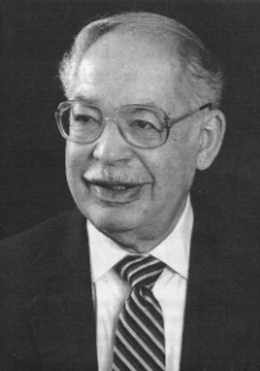Philip Burton was a Seattle lawyer for more than 40 years, a voice for the disadvantaged, and a fighter for reforms to end discrimination in education, housing, and employment. His legal actions led to the desegregation of Seattle Public Schools.
Chemistry Major From Kansas
Philip Burton was born in Topeka, Kansas, on October 28, 1915, to Dwight and Myrtle Burton, the second of nine children. He received a Bachelor of Science degree in Chemistry in 1939 from Kansas University and a Juris Doctorate degree from Washburn College in Kansas in 1948. From 1943 to 1946 he served in the U.S Army-Air Force, European Theater, and attained the rank of First Lieutenant.
For Burton, fighting for civil rights was a lifelong activity that began when he was a law student at Washburn School of Law in Topeka. As a law student, he brought suit against the City of Topeka for discrimination in the city-owned movie theaters and public swimming pools. He worked on the initial filing of the landmark Brown v. Board of Education case (it was the Topeka Board of Education). Thurgood Marshall eventually argued the case before the U.S. Supreme Court. The ruling abolished segregation in public schools.
Burton came to Seattle in 1948, and started a law practice, which lasted until his retirement in 1990. He was president of the Seattle Branch of the National Association for the Advancement of Colored People (NAACP) and served on its board for 45 years.
During the 1950s, the Seattle NAACP branch addressed many issues, including discrimination in housing. Black people were attempting to find housing outside the increasingly segregated Central Area. Burton and his family moved to Bothell in 1955 in the belief that once people began to know each other, the housing problem would be resolved. Later he commented, "We did not correctly gauge the hostility that would be found in the white communities of the North. We had expected that hostility in the South, but it was really unexpected in the North." In 1967, he helped win passage of the state’s Fair Housing Act, which barred discrimination in real estate transactions.
De facto school segregation was another issue being addressed and in 1962, Burton, as an NAACP attorney, brought a lawsuit against the Seattle School District to end public school segregation. After numerous trial delays and conferences among the School Board, established leaders, the mayor, and city council, this lawsuit prompted the School Board in 1963 to initiate a voluntary transfer program. This allowed students to transfer from one school to another in an attempt to ease racial imbalance. In subsequent years, Burton filed and threatened other legal actions against the district, including a lawsuit in 1977 that spurred the district to adopt a mandatory school desegregation program.
A modest, compassionate man, Burton received numerous awards for his service to the community. In addition to his legal and civil rights interests, he was active in the Seattle Rotary Club, American Civil Liberties Union, and the Seattle Chamber of Commerce. For 26 years he was a board member of the Ecumenical Metropolitan Ministry/Northwest Harvest. He died after a long illness on July 30, 1995.

